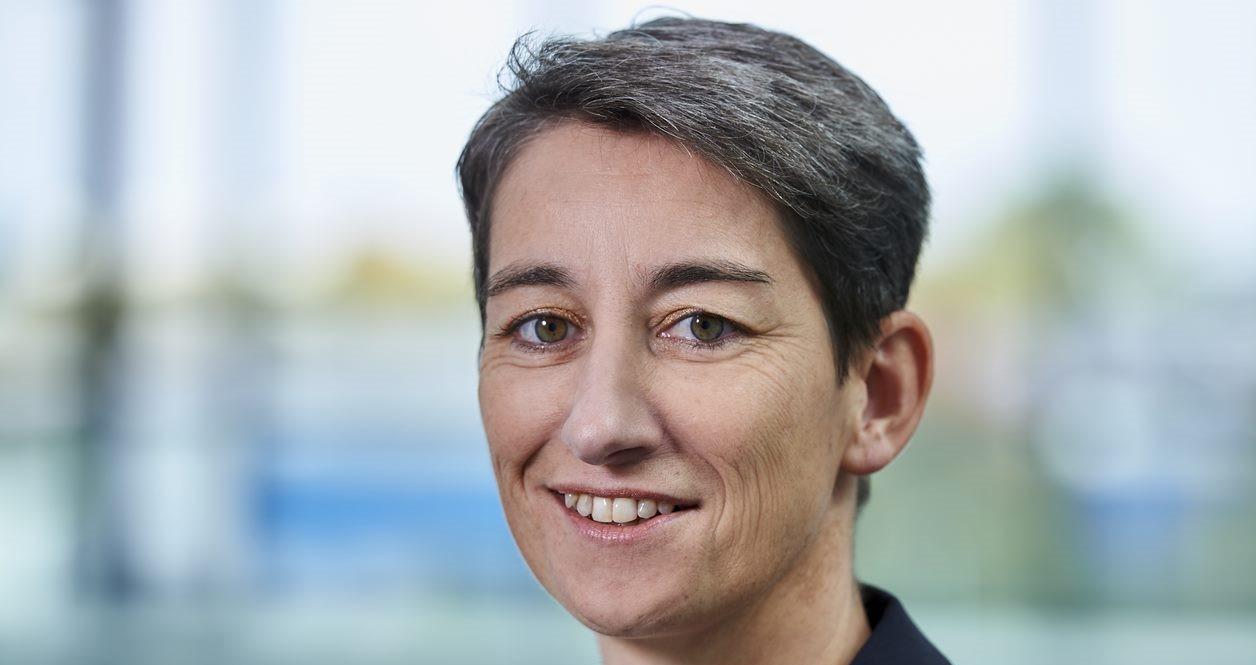At the LOPEC Conference, Dr. Petra Severit, CTO at the specialty chemical company Altana, will discuss how printed electronics can be used to master the challenges of our century. In this interview ahead of the conference, she explains why printed electronics boosts the power of solar cells, batteries for electric cars, and much more, and what innovations there are in the field of materials and functional inks.
Dr. Severit, what role does printed electronics play for your company?
Dr. Petra Severit: A very important one. Printed electronics combines the know-how of printing technology with that of electronics, and Altana contributes the chemical perspective. Our Elantas division offers its own product line for printed electronics, with printing inks and services both for existing and entirely new applications.
Which specific products for printed electronics are they?
Dr. P. Severit: The Elantas portfolio mainly comprises functional, in other words, conductive, insulating, and dielectric screen-printing inks. They offer optimised printing properties and are also flexible, thermoformable and high-temperature resistant. Especially in consumer electronics, we are helping manufacturers to build ever smaller and more powerful devices, thereby saving materials and energy. At the same time, our products help extend the service life of electronic components, which increases their sustainability.
In addition, our portfolio has expanded thanks to our acquisition of a stake in the startup Saralon. As the exclusive partner of this young company, which specialises in the development of inks for printing electronics, Elantas primarily sells highly stretchable silver inks, a water-based copper ink, and a variety of conductive adhesives throughout Europe. Saralon’s functional inks can already be used today to print batteries, for example.
Where else are your products used?
Dr. P. Severit: The applications are diverse and can be found in the electronics sector, in household and other consumer appliances, but also in the packaging industry, the logistics sector, and vehicle construction. Established applications for printed electronics include, for instance, lighting, control elements and seat occupancy sensors in vehicles, or buttons on washing machines. Printed electronic sensors in electric car batteries measure temperature and pressure, among other things. If required, the battery can also be heated using printed heating elements—that, not least, reduces charging times and thus increases the service life of the battery.
With reference to printed electronics, what is your company currently researching?
Dr. P. Severit: Altana is committed to a culture of innovation that is truly practised. We annually invest around seven percent of our sales in research and development. In 2022 alone, that amounted to 193 million euros. That includes investments in printed electronics. In the past few years, for example, Elantas has developed several products for particularly thin conductor track printing, so that both the conductor tracks and the spaces are as fine as 30 micrometres. That represents clear added value for our customers because it allows them to fit more functions into less space. We see a considerable advantage here, especially when it comes to printing solar cells, since the thinner conductors offer more surface area to absorb sunlight, and hence effectively increase the efficiency of solar cells.
Printed heating elements are also currently very promising. They are being used in more and more applications in different sectors. Here we specialise in screen printing pastes that cover a temperature range of 55 to 200 degrees Celsius and can be printed on various plastics. Last but not least, we are also investing in disruptive printing technologies such as our laser-based digital printing process Heliosonic. It enables high-precision and material-saving printing, for example, on continuous formats.
You will be giving a presentation at the LOPEC Conference. What awaits the audience?
Dr. P. Severit: I will be talking about how printed electronics can be used to actively shape global megatrends, and how our products can help consumers and companies to not only cope with the disruptive developments of the 21st century—digitalisation, the demographic shift, the transformation of mobility and our economy toward greater sustainability—but also derive the greatest possible benefit from them.
What do you expect from LOPEC?
Dr. P. Severit: Above all, we hope that LOPEC 2024 and the accompanying conference will lead to a fruitful exchange of knowledge and experience. We want to engage with customers and partners so that together we can give an even stronger push to launching the solutions offered by printed electronics on the market.
The next LOPEC takes place in Munich from 5-7 March 2024 (exhibition: 6 and 7 March 2024).
Caption: Dr. Petra Severit, CTO at Altana


